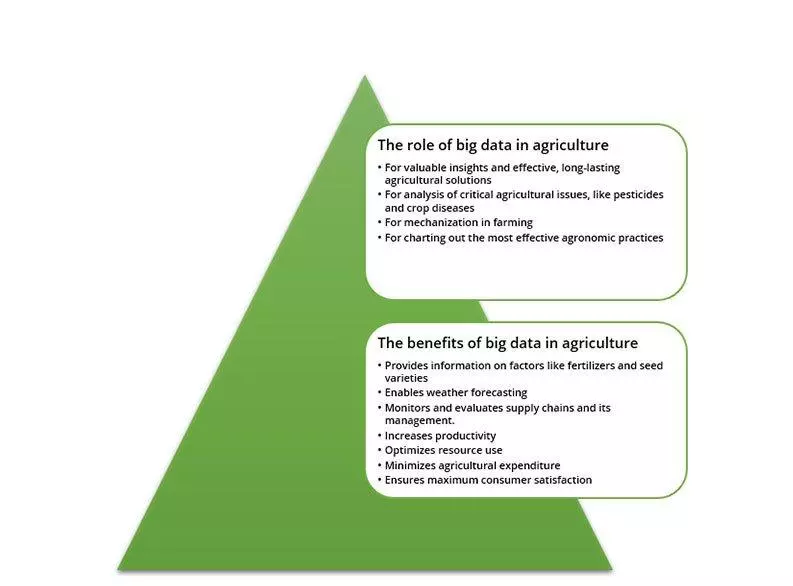If tractors transformed farming in the Middle Ages, big data is set to revolutionise agriculture in the modern era. Get ready for some big action with big data in agriculture!
We’ve come a long way from the traditional methods of farming. Throughout these years, the facets of farming have been modernized with the help of several technological advancements. In the last few years of the 20th century, farmers witnessed the launch of satellites and utilized this technology for better tracking and planning. From there, in the early 2000s, like everyone else, they started using cell phones for data access and easier communication. Come today, farmers are deploying voluminous amounts of data created by billions of interconnected devices to revamp their agronomic models and get an overall understanding of their farms. This way, big data in agriculture can pave the way for making informed decisions and converting ordinary harvests into bumper crops and profits.

The Role of Big Data in Agriculture
What could be the link between something so digital, like big data, and so physical, like farming? Knowledge of technology and its precise execution makes every process simpler. Now, applying this logic to agriculture, can you imagine the amount of time and resources farmers and agriculturists can save if they knew about the techniques and technologies available to provide them with effective and long lasting agricultural solutions? Big data does just that. It solves some of the biggest challenges that farmers face, like unavoidable inefficiency during planting and harvesting, unforeseen climate changes, and lack of adequate mechanization. Big data can put an end to most of these problems by detecting and analyzing critical issues, using all the data available, and helping farmers make more informed decisions. Such decisions could include deciding the best seed variety or the most effective agronomic practices or which market opportunities to chase for ensuring maximum productivity.
The Benefits of Big Data in Agriculture
According to McKinsey & Company, about a third of food produced is lost or wasted every year, leading to a global food loss of a $940 billion. This is more of a concern in developing and underdeveloped nations, which face scarcity of resources and have more mouths to feed. The solution to this is different from the mere collection of historical information using digital technologies. With big data in the picture, the world has witnessed an automatic increase in information storage and seamless processing and analyzing, which were difficult to achieve earlier due to technological limitations. This, in turn, has paved the way for precision in agricultural techniques. Now, big data has a wide array of benefits in store for farmers and reshapes agriculture in the following ways:
- Analyzing soil types and fertility levels, to predict which seeds and fertilizers to use, with the help of sensors on fields and devices installed in machines.
- Predicting climate conditions and enabling apt weather forecasting by satellites and devices on aerial and ground levels.
- Analyzing the crop and preventing spoilage and potential diseases by providing accurate information via unmanned aerial vehicles, like drones.
- Monitoring and evaluating supply chains via RFID tracking systems.
- Increasing crop yield and optimizing resource use by integrating information like weather conditions, soil types, and market opportunities.
Another interesting development is the rise in the use of precision agriculture. The underlying technology for precision agriculture is big data itself. Precision agriculture uses GPS technology and enables a farmer or researcher to locate their vehicular positions on the field, measure fluctuations in factors like nutrients, irrigation, fertilizer inputs, nitrogen, moisture levels, and topography. Through satellites and UAV imagery, one can make better soil, water, and crop management decisions and consequently minimize inputs and maximize yield.
The analysis of big data and its applications offer valuable insights and opportunities for farmers and agriculturists to understand consumer needs and increase overall productivity. The need, therefore, is for governments, farmers, and data specialists to come together and form a sturdy ecosystem that can renovate the existing agricultural landscape.




Leave your comments
Post comment as a guest